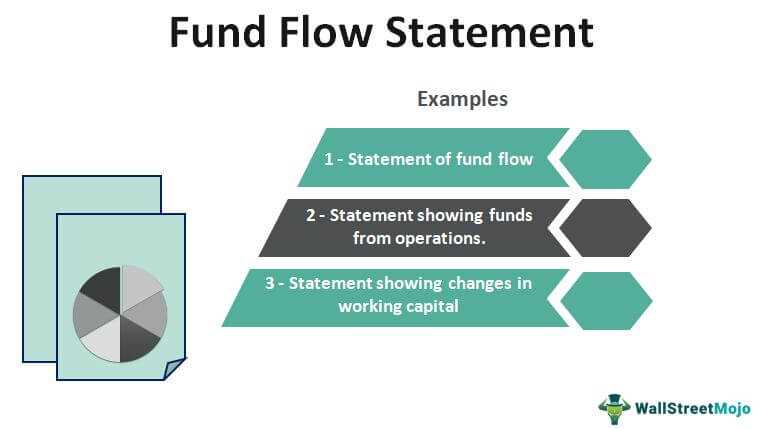Flow of Funds Accounts: Definition

The Flow of Funds Accounts is a financial reporting system that provides a comprehensive overview of the flow of funds in an economy. It tracks the movement of money and financial assets between various sectors, such as households, businesses, government, and financial institutions.
The accounts capture various types of financial transactions, including borrowing, lending, investment, and saving. They track the movement of funds through different types of financial instruments, such as stocks, bonds, loans, and deposits.
Importance of the Flow of Funds Accounts
These accounts provide valuable information on the allocation of financial resources across sectors, helping policymakers evaluate the effectiveness of monetary policy measures and identify areas where intervention may be necessary.
Uses of the Flow of Funds Accounts

The Flow of Funds Accounts has several important uses:
- Assessing the overall financial health and stability of the economy.
- Identifying potential risks and vulnerabilities in the financial system.
- Evaluating the effectiveness of monetary policy measures.
- Monitoring the flow of funds between sectors and analyzing trends.
- Informing economic research and analysis.
By providing a comprehensive and detailed view of the financial flows in the economy, the Flow of Funds Accounts serves as a valuable tool for policymakers, economists, researchers, and analysts.
By tracking the movement of funds, Flow of Funds Accounts help economists and policymakers gain insights into the overall financial stability and potential risks within an economy. They provide valuable information on the sources and uses of funds, including investments, borrowing, and lending activities.
One of the key benefits of Flow of Funds Accounts is their ability to identify potential imbalances or vulnerabilities in the financial system. For example, if the accounts show a significant increase in household debt, it may indicate a potential risk of a debt crisis or a housing bubble.
Furthermore, these accounts help policymakers monitor the effectiveness of monetary policy. By analyzing the flow of funds, central banks can assess the impact of their policy decisions on different sectors of the economy. This information is crucial for making informed decisions and adjusting monetary policy as needed.
Flow of Funds Accounts also provide valuable data for researchers and analysts. They can be used to study the relationship between different sectors of the economy, identify trends, and forecast future economic developments. This information is essential for businesses, investors, and financial institutions to make informed decisions and manage risks.
Uses of Flow of Funds Accounts
1. Assessing Financial Stability
Flow of Funds Accounts help in assessing the overall financial stability of an economy. By analyzing the flow of funds between different sectors, such as households, businesses, and government, policymakers can identify potential imbalances or vulnerabilities in the financial system. This information is crucial for implementing appropriate policies to maintain stability and prevent financial crises.
2. Analyzing Investment Patterns
Flow of Funds Accounts provide insights into investment patterns within an economy. By tracking the flow of funds into different types of assets, such as stocks, bonds, or real estate, economists and investors can understand the preferences and behavior of investors. This information is useful for making investment decisions and predicting market trends.
3. Monitoring Debt Levels
Flow of Funds Accounts also help in monitoring the levels of debt within an economy. By tracking the flow of funds between borrowers and lenders, policymakers can identify excessive borrowing or lending activities that could lead to financial instability. This information is crucial for implementing appropriate regulations and policies to manage debt levels and prevent financial crises.
4. Assessing Household and Business Finances
Flow of Funds Accounts provide insights into the financial health of households and businesses. By analyzing the flow of funds between income, savings, and investment, policymakers and economists can assess the financial well-being of different sectors of the economy. This information is useful for designing policies that promote economic growth and financial stability.
5. Informing Monetary Policy
Flow of Funds Accounts play a crucial role in informing monetary policy decisions. By analyzing the flow of funds between different sectors, policymakers can assess the impact of monetary policy measures on the economy. This information helps central banks in formulating appropriate monetary policy strategies to achieve their objectives, such as controlling inflation or promoting economic growth.
How Flow of Funds Accounts Inform Monetary Policy

The flow of funds accounts play a crucial role in informing monetary policy decisions. These accounts provide valuable information on the financial activities and positions of various sectors of the economy, allowing policymakers to assess the overall health and stability of the financial system.
1. Assessing Financial Stability
By analyzing the flow of funds accounts, central banks and policymakers can gain insights into the stability of the financial system. They can identify any potential risks or imbalances that may be building up, such as excessive borrowing or asset price bubbles. This information helps them to take proactive measures to prevent financial crises and maintain the stability of the economy.
2. Monitoring Credit Conditions
The flow of funds accounts also provide valuable data on credit conditions in the economy. Policymakers can track the flow of credit to different sectors, such as households, businesses, and the government. This information helps them to assess the availability and cost of credit, which is crucial for economic growth and stability. It allows them to identify any tightening or loosening of credit conditions and take appropriate policy actions to ensure the smooth functioning of credit markets.
The flow of funds accounts provide a comprehensive view of the interactions between different sectors of the economy. Policymakers can analyze the flow of funds between sectors, such as households, businesses, and financial institutions. This helps them to understand the interdependencies and linkages between sectors and identify any potential vulnerabilities. For example, if there is a significant flow of funds from households to the financial sector, it may indicate excessive household borrowing or risky financial activities.
4. Informing Interest Rate Decisions
One of the key tools of monetary policy is the setting of interest rates. The flow of funds accounts provide valuable information on the financial conditions and activities that influence interest rate decisions. Policymakers can analyze the flow of funds to assess the overall demand for credit, the level of savings, and the investment activities in the economy. This information helps them to determine the appropriate level of interest rates that will support economic growth while maintaining price stability.
Data Reports on Flow of Funds Accounts
Flow of Funds Accounts provide valuable data and insights into the financial health and stability of an economy. These data reports are crucial for policymakers, economists, investors, and financial institutions to make informed decisions and assess the overall economic conditions.
There are several key data reports that are generated from the Flow of Funds Accounts:
1. Balance Sheets
2. Sectoral Financial Flows
Sectoral financial flows report the net borrowing or lending activities of different sectors. It shows how much each sector is borrowing or lending in a given period. This data is crucial for assessing the overall financial health of the economy and identifying potential risks or imbalances.
3. Debt and Credit Market Instruments
This data report provides information on the outstanding debt and credit market instruments, such as bonds, mortgages, and loans. It helps in analyzing the level of debt in the economy and the composition of the debt across different sectors.
4. Financial Assets and Liabilities
5. Foreign Sector Transactions
This data report focuses on the transactions between the domestic economy and the rest of the world. It includes information on international trade, foreign investments, and foreign exchange transactions. This data is crucial for assessing the external sector’s impact on the overall economy.
Researchers and analysts extensively use these data reports to conduct in-depth studies and research on various aspects of the economy. They help in identifying potential risks, evaluating the effectiveness of monetary policies, and guiding investment decisions.
Analyzing the Latest Flow of Funds Data
One key aspect of analyzing the latest Flow of Funds data is examining the changes in the composition of assets and liabilities. This information can shed light on the overall risk profile of the economy and help identify potential vulnerabilities. For example, if there is a significant increase in household debt, it could indicate a potential increase in financial fragility.
Another important aspect to consider when analyzing the latest Flow of Funds data is the interplay between different sectors of the economy. By examining the flow of funds between sectors such as households, businesses, and the government, analysts can assess the overall health of the economy. For instance, if there is a decrease in business investment and an increase in government borrowing, it could suggest a slowdown in economic activity.
Furthermore, analyzing the latest Flow of Funds data can provide insights into the effectiveness of monetary policy. By monitoring changes in interest rates, credit availability, and asset prices, policymakers can assess the impact of their policy decisions on the financial system. This information can help guide future policy actions and adjustments.

Emily Bibb simplifies finance through bestselling books and articles, bridging complex concepts for everyday understanding. Engaging audiences via social media, she shares insights for financial success. Active in seminars and philanthropy, Bibb aims to create a more financially informed society, driven by her passion for empowering others.
